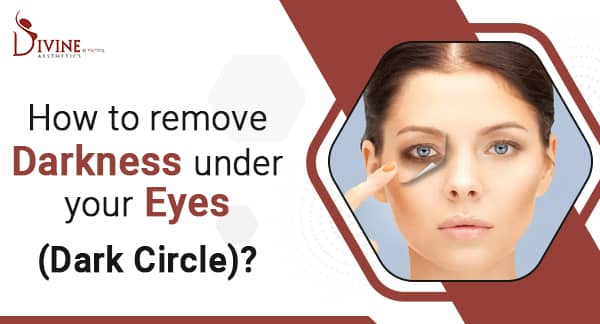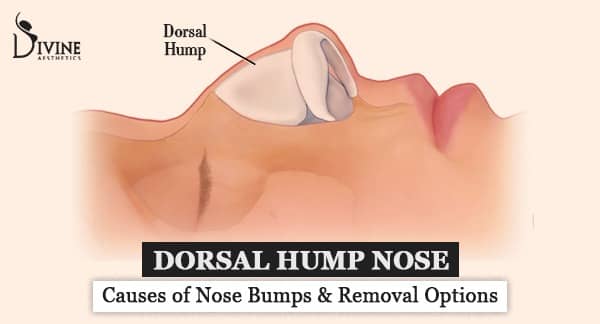Dark circles under the eyes, also known as periorbital melanosis, are a common concern amongst both men and women. This condition is characterized by the presence of darkness around an individual’s eyes. On top of this, one might also find a bit of puffiness, thinning skin, and hollowness below the eyes.
Dark circles under the eyes can pose a troubling cosmetic concern for men and women across the globe. This is why one must seek treatment to eye dark circles. But how to remove dark circles? Keep reading to find the answer in this blog.
What Are Dark Circles?
Dark circles refer to the discoloration or pigmentation that appears under the eyes, typically in the form of dark or purplish shadows. They can be caused by various factors such as genetics, thinning skin, loss of collagen, allergies, fatigue, dehydration, sun exposure, or lifestyle habits like smoking and excessive alcohol consumption.
Dark circles can make a person look tired, aged, or unhealthy. While they are generally harmless, many individuals seek ways to reduce their appearance for cosmetic reasons. Various treatments and remedies are available, including topical creams, serums, eye masks, cold compresses, adequate sleep, hydration, a healthy diet, and managing underlying health conditions.
But what if you have tried all sorts of over-the-counter treatment methods out there but haven’t been able to find an effective solution? In that case, the answer to how to reduce dark circles lies in seeking the help of a qualified plastic surgeon.
The Causes of Dark Circles
Dark circles can have multiple causes. Some common causes include:
- Genetics: The presence of dark circles can be hereditary, meaning they may run in families. Certain genes can contribute to thinner skin or increased pigmentation in the under-eye area.
- Thin or Aging Skin: The skin around the eyes is delicate and prone to thinning as we age. Thinner skin can make blood vessels beneath the surface more visible, leading to the appearance of dark circles.
- Pigmentation irregularities: Excessive production of melanin, the pigment responsible for skin color, can lead to hyperpigmentation under the eyes, causing dark circles.
- Allergies: Allergic reactions can cause inflammation, itching, and rubbing of the eyes, leading to increased blood flow and visible blood vessels, resulting in dark circles.
- Fatigue and Lack of Sleep: Sleep deprivation or inadequate rest can cause blood vessels to dilate, leading to dark circles. Fatigue can also make the skin appear paler, making the underlying blood vessels and shadows more noticeable.
- Lifestyle Factors: Unhealthy habits like excessive alcohol consumption, smoking, poor nutrition, and dehydration can contribute to the development of dark circles.
- Sun Exposure: Overexposure to the sun’s harmful UV rays can stimulate melanin production and worsen pigmentation irregularities, leading to dark circles.
- Underlying Health Conditions: Dark circles can be a symptom of certain health conditions such as anemia, thyroid disorders, or chronic sinus congestion.
It’s essential to identify the specific cause of dark circles in individual cases to determine the most appropriate treatment or management approach. Let’s look at some of the treatment options now.
How Can Plastic Surgeons Help Treat Dark Circles?
How to get rid of dark circles? Plastic surgeons can help reduce the appearance of dark circles through various treatment options. A few of these treatment options are:
- Surgical procedures: In some cases, plastic surgeons may recommend surgical interventions to address the underlying causes of dark circles. Blepharoplasty, or eyelid surgery, can remove excess skin or fat deposits that contribute to the appearance of under-eye bags or shadows.
- Dermal fillers: Injecting dermal fillers, such as hyaluronic acid-based fillers, can help diminish the appearance of dark circles by adding volume and smoothing out the under-eye area. This can reduce the visibility of underlying blood vessels and hollows.
- Laser treatments: Laser therapies can target pigmentation irregularities and stimulate collagen production. This can improve skin tone and reduce the appearance of dark circles.
- Chemical peels: Plastic surgeons may suggest chemical peels to exfoliate the skin and promote cell production. This can help lighten pigmentation and improve the overall texture and tone of the under-eye area.
- Combination treatments: Plastic surgeons often customize treatment plans based on individual needs. They may recommend a combination of procedures such as surgery, fillers, laser treatments, and skincare to achieve optimal results.
See the related Video
It’s important to consult with a qualified plastic surgeon to determine the most suitable treatment options for reducing dark circles based on your specific concerns and medical history. Dr. Amit Gupta at Divine Cosmetic Surgery provides personalized recommendations and guides patients throughout the process.
Get Dark Circle Treatment At Divine Cosmetic Surgery
Divine Cosmetic Surgery is India’s most trusted plastic surgery center. Dr. Amit Gupta is the founder and director of Divine Cosmetic Surgery and he is a leading plastic surgeon in India. Divine Cosmetic Surgery boasts of an amazing team of plastic surgeons who are always going above and beyond to ensure that all patients only get the best possible treatments.
So, what are you waiting for? Contact Dr. Amit Gupta and schedule your first consultation to get rid of dark circles.











